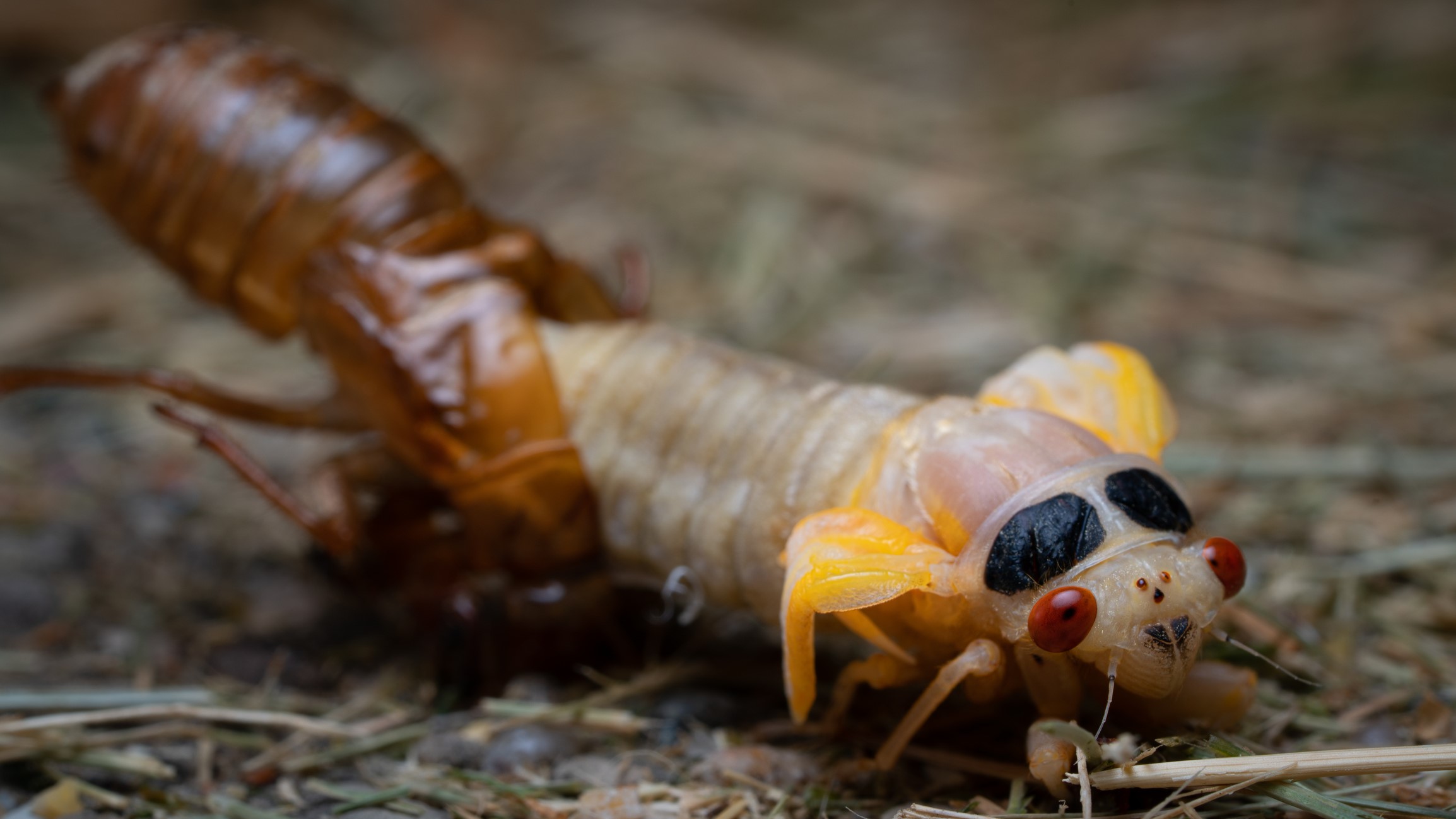A trillion cicadas will descend on the US this spring in rare event that could leave unforgettable stench
Periodical cicadas belonging to two separate broods, Brood XIII and Brood XIX, will emerge together in a dual emergence event that will see a trillion cicadas buzzing across 16 U.S. states.

More than a trillion cicadas could emerge throughout the U.S. Midwest and Southeast this spring as the schedules of two separate broods align for the first time since 1803.
Brood XIII and Brood XIX represent two distinct groups of periodical cicadas (Magicicada) that emerge according to 17- and 13-year life cycles, respectively. In a rare natural event that occurs once every 221 years, these two broods will synchronously tunnel through the ground to the surface starting in late April across 16 states.
The event, known as a dual emergence, could potentially lead the two broods to interbreed, experts told The New York Times.
"Under just the right circumstances and with just the right number of individuals cross breeding, you have the possibility of the creation of a new brood set to a new cycle," Floyd Shockley, an entomologist and collections manager at the Smithsonian National Museum of Natural History, told the Times.
Periodical cicadas, which comprise seven species, spend most of their lives underground as nymphs and feed off of sap that oozes from tree roots. After 13 or 17 years starved of daylight (depending on the species), the insects burrow to the surface using their front legs and transform into adults. The males vibrate membranes on the sides of their bodies to produce a song — potentially louder than a plane in a chorus — that attracts mates, according to The New York Times. Once a pair has finished mating, the females cut slits in tree branches to lay their eggs in.
Adult periodical cicadas survive for three to four weeks and don't live to see their eggs hatch roughly three weeks later. The newly hatched nymphs then drop to the ground and tunnel down into the soil to repeat the cycle.
Related: Why are insects attracted to artificial lights?
Get the world’s most fascinating discoveries delivered straight to your inbox.
Brood XIII, which has a 17-year cycle, and Brood XIX, which has a 13-year cycle, will overlap along a narrow band in northern Illinois and eastern Iowa. Brood XIII, also known as the Northern Illinois Brood, will also emerge in small parts of Wisconsin and Indiana, whereas Brood XIX, or the Great Southern Brood, will be widespread throughout the Midwest and Southeast.
The overlap zone is so narrow that the number of cicadas may not be noticeably bigger in Illinois and Iowa than in other states, said Gene Kritsky, a professor emeritus of biology at Mount St. Joseph University in Ohio and author of "A Tale of Two Broods: The 2024 Emergence of Periodical Cicada Broods XIII and XIX" (Ohio Biological Survey, 2024).
More than 1.5 million cicadas may emerge within an acre (0.4 hectare) of forested land, Kritsky told Live Science in an email, but deforestation has eliminated much of the canopy these insects need to thrive.
The cicadas will likely cluster in forested areas and green urban spaces close to where the insects emerge, Shockley told the Times. "In urban areas, there will be sufficient numbers to necessitate removal of their bodies," which produce an unforgettable smell similar to that of rotting nuts as they decay, he added.
This year's dual emergence event will likely end in early July. Scientists recommend leaving the cicadas alone if possible, as they are beneficial to the ecosystem, don't bite or sting, and don't carry diseases.
Emerging cicadas aerate the soil when they burrow into the surface, and when the females lay their eggs, they perform a natural pruning service that results in more flowers and fruit growing the following year, Kritsky said.
"The large number of adult cicadas provides a food bonanza to all sorts of predators, which can have a positive impact on their populations," he said. "Finally, after the cicadas die their decaying bodies contribute a massive amount of nitrogen and other nutrients to the soil."
"Don't be scared of it," Shockley told the Times. "Embrace it for the wondrous event that it is, and embrace the fact that it's very temporary. It will be intense but short-lived."

Sascha is a U.K.-based staff writer at Live Science. She holds a bachelor’s degree in biology from the University of Southampton in England and a master’s degree in science communication from Imperial College London. Her work has appeared in The Guardian and the health website Zoe. Besides writing, she enjoys playing tennis, bread-making and browsing second-hand shops for hidden gems.



